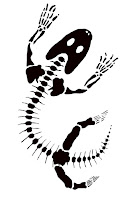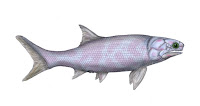Fishing Around in Evolution Reels an Extinct Species

A NEW GENUS AND SPECIES FROM THE EARLY CARBONIFEROUS NAMED IN HONOUR OF NOVA SCOTIA FOSSIL RESEARCHER BLUE BEACH & THE NATIONAL POST Today a research paper was published in The Royal Society Publishing Open Science UK of a 'new' genus and species of fish (350myo) found at Blue Beach, Nova Scotia, Canada has been named after two (2) of my favorite things: The Avon River and my partner, Christopher Mansky. (photo: Christopher F. Mansky - Blue Beach Fossil Researcher) Named: Avonichthys manskyi gen. et sp. nov. LINK TO RESEARCH PAPER: A primitive actinopterygian braincase from the Tournaisian of Nova Scotia Avonichthys manskyi gen. et sp. nov. Photograph and interpretive drawing of specimen in dorsal view. Scale bar = 10 mm. br.psp, broken dorsal surface of parasphenoid; dsph, dermosphenotic; ?esc, indeterminate extrascapular; f, frontal; hm, hyomandibular; ifc, infraorbital canal; it, intertemporal; mx, maxilla; nIII, foramen for oculomotor ner





